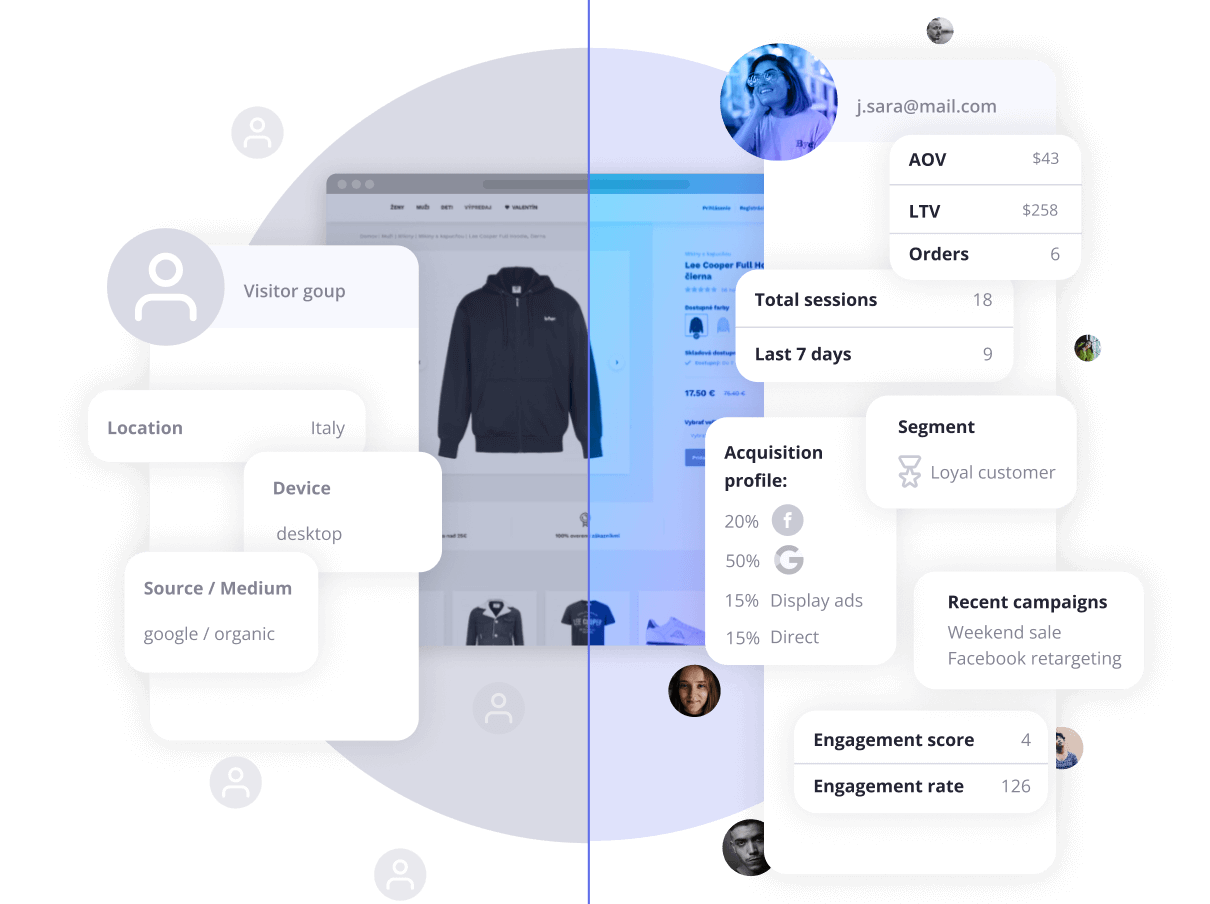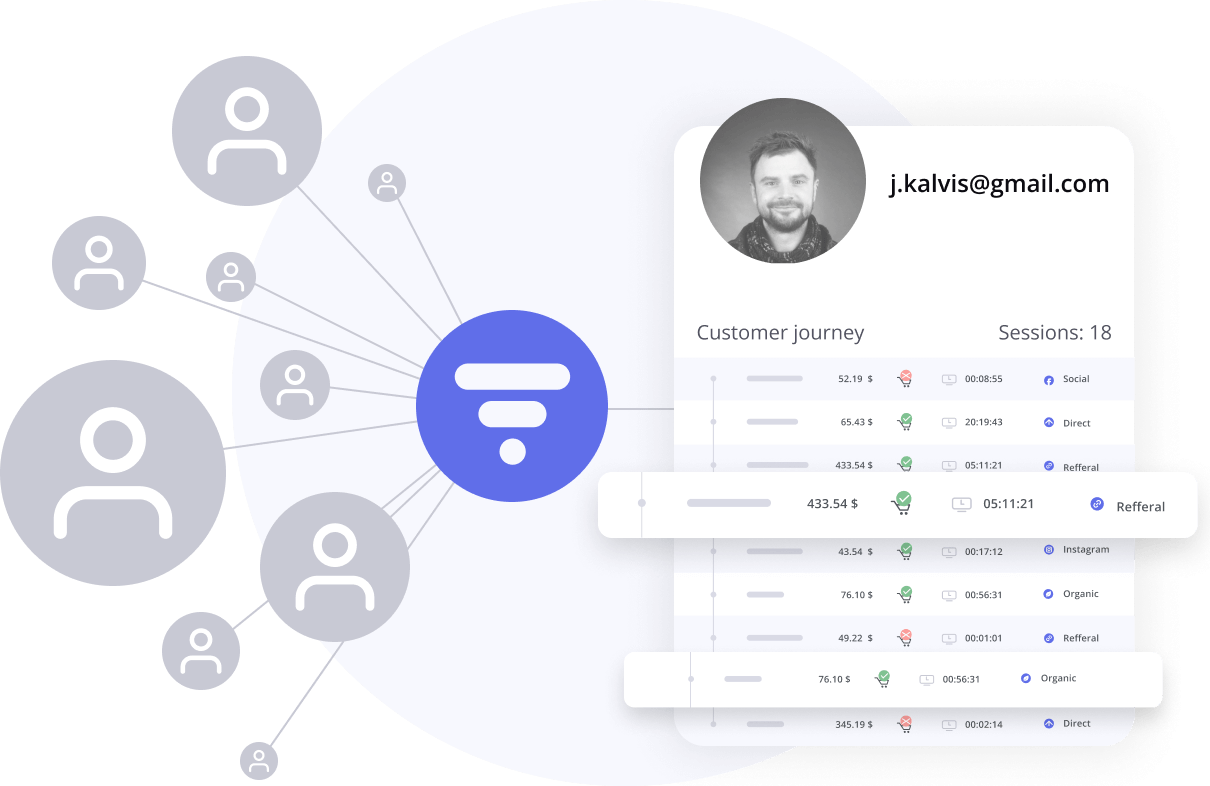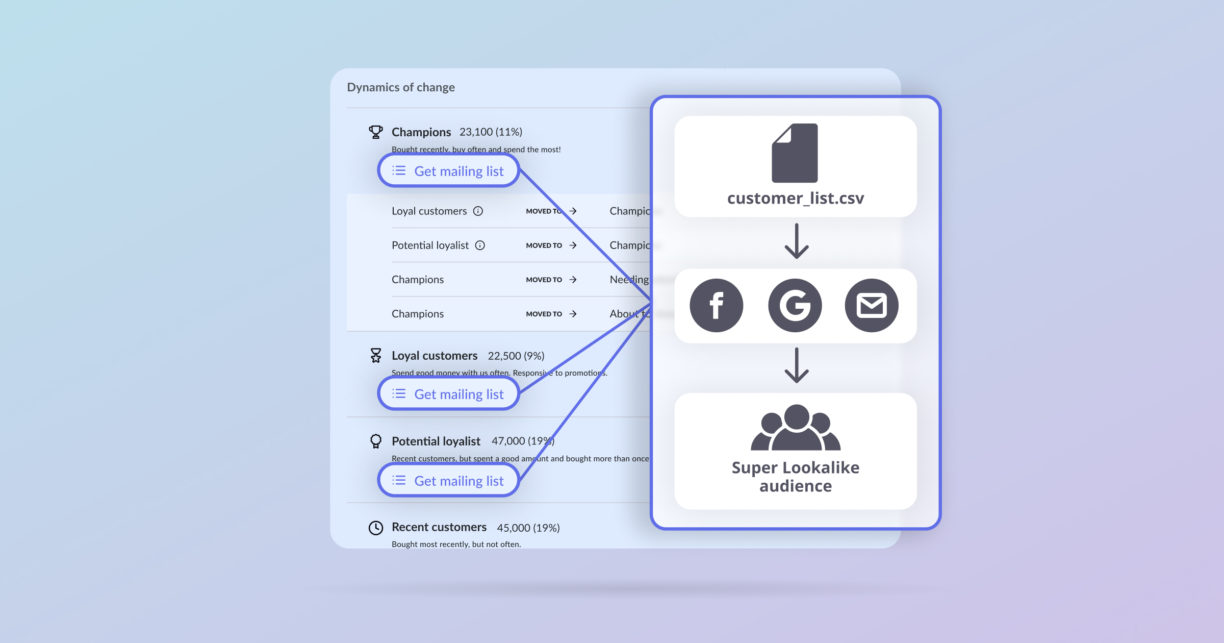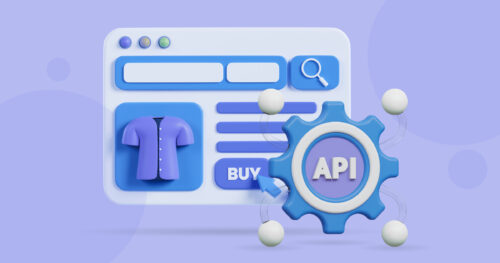When it comes to building an effective marketing strategy, acquiring data is one thing and actioning on it is another. Mostly because the data is scattered and hard to perceive, and unifying it is a whole other task.
It is only smart to invest in a tool that helps you not just see the bigger picture but derive insights to attain it. There are quite a handful of options to choose from, but when it comes to finding the right fit for your business, it can be a hard find. Apart from pricing, features, integrations, and support, you need a tool that helps you understand, and engage your target audience.
Verfacto offers built-in features that can leverage data to fuel smarter marketing decisions. How? Through offering you the centralised source of truth about the customer journey and experience with your brand. The source of truth that can be shared with other tools later on.

With all the first-party data you collect, you can empower the whole marketing team: performance, email, social, you name it. This is accomplished through integration of VerfactoProfile with marketing tool you are using:
- Performance. Meta Pixel, Google Pixel
- Email and lead generation. Klaviyo, Mailchimp, Hubspot etc.
- CRO. Google Optimize, Adobe Target
A specific example, to tingle your imagination of what exactly Verfacto Profile enables you to do. You can build a segments of customers who were noticed on a website with an “unfulfilled buying intent” after returning to you for the 3rd time in a row from a “Direct” channel last week . Pass this data to Klaviyo and Meta to retarget them with automated email sequence as well as remind him about your brand through some visual ads. All that without a need to manually update any segments in any of the tools after the initial setup.

How does it work?
Verfacto keeps track of each customer session on your website through a tracking script. Once you set it up, Verfacto is continuously building Verfacto Profile around each and every visitor and eventually customer ending up at your website. As soon as the data is identified and matched with user’s profile it gets returned to the website and becomes available for integration.
What Verfacto does it provides a global variable called vfUserData. Which contains all we’ve collected about the particular visitor. As a result the whole customer journey becomes available at the fingertips of your marketers – from its first visit up to when he became a loyal customer.
Here is a sample JSON object of a vfUserData global variable that is returned for each visitor coming to your site.
// Your customer
window.vfUserData = {
// Session information, based on all devices user was coming from
is_returning: true,
last_channel: "direct",
last_cjp: "loyalty",
session_count: 50,
days_since_last_visit: 1,
// Purchase information, based on customer profile
c_aov: 43.28,
c_ltv: 189.3,
c_days_since_last_purchase: 48,
is_customer: true,
// RFM scores (1-5)
frequency_score: 3
recency_score: 2
// Customer Segments, based on customer profile
s_loyal: true,
s_discount: true,
s_fullprice: false,
s_sales: true,
s_trendy: false,
s_refunder: false,
// Customer Acquisition Profile, based on customer profile
cap_scores: {
direct: 0.35,
display: 0,
email: 0.15,
organic_search: 0.1,
referral: 0.25,
social: 0.15
other: 0,
}
// Current device's profile
current_profile: {
is_returning: true,
last_channel: "social",
last_cjp: "consideration",
current_session_cjp: "awarenesss",
session_count: 20,
days_since_last_visit: 5,
// Customer Acquisition Profile, based on guest profile
cap_scores: {
direct: 0.35,
display: 0,
email: 0.15,
organic_search: 0.1,
referral: 0.25,
social: 0.15,
other: 0,
}
}
//Attention score, calculated in realtime
attention_rate: 0,
// Interest group scores (coming soon)
interest_group_scores: {
sales: 0.9,
man_clothes: 0.2,
women_clothes: 0.33
}
// Smart coeficient aka random session identifier values 0-3
s_c: value,
}
- All attributes are divided into several logical groups:
Behavior in the current session
A group of attributes that are mainly based on the data from the current session:
- attention_rate—as the name implies, this attribute reflects how much user’s attention you currently have [-infinity … +infinity]
Use case: These metrics are mostly used for on-site marketing. Instead of using generalized time or event based triggers, use predictive behavioral metrics to determine best timing.
Customer historical data
A group of attributes that identify the historical information about purchases and the monetary value of a customer:
- c_aov—average order value of a customer (AOV)
- c_days_since_last_purchase—days since last purchase
- c_ltv—lifetime value of a customer (LTV, or CLV).
Use case: Segment your customers based on their buying behavior. Advertise expensive products to high AOV customers. Or determine users buying cycles and communicate with them using days_since_last_purchase.
Behavioral historical data
A group of attributes that identify the historical information about a visitor:
- session_count—the amount of sessions a visitor made across all devices
- days_since_last_visit—days since last visit
- last_channel—the channel identifier of the previous session
- cap_scores—acquisition profile scores that identify preferred or most frequent channels that a visitor returns to your website from
- most_frequent_device—a visitor’s device preference.
Use case: Knowing a customer’s days since last visit lets you give a personalized message: a warm welcome after a break, or showing where he left off last time. If you are looking for advanced strategies, identify the customer’s preferred channel and exclude him from other platforms. Spend money only on effective ads.
Segments
A group of attributes that identify predefined segments that a customer/visitor belongs to:
- recency_score—a score from 1 to 5 based on your customer interaction history
- frequency_score—a score from 1 to 5 based on all customer profiles that are present
Use cases: Most common use case is RFM segmentation. Real-time profiler, can feed customer segments back to Meta business or Google ads seamlessly, so you can use laser focus targeting or have improved lookalike audiences.
How to use Verfacto Profile for your marketing strategy?
Understanding your customers motivations is key to serving them better, which ultimately brings tangible value to your business.
Studying raw customer data brings little to no value. Aggregated data, on the other hand, enables you to see trends and patterns hidden from the human eye that can be converted into business opportunities. Here’s how?
We have collected a series of blogposts that explain in detail some scenarios how to use the data sharing functionality and make a leverage with it Google, Facebook and email marketing.
Next Step? Access audience insights with Verfacto
With Verfacto’s real-time Profile, you can collect and leverage advanced customer data with most of the marketing tools available on the market.
While we are just getting started with Real-time customer profiler feature, watch out for upcoming articles to uncover its capabilities to boost your marketing and business.
To try it out, simply sign up for Verfacto. In case of any difficulties or product-related questions, contact our support team or book a demo with one of our experts.


